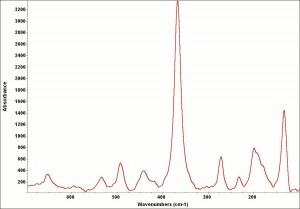Copper arsenite
Description
A light yellowish-green toxic powder known as the pigment Scheele's green. Copper arsenite was discovered in Sweden 1775 by C.W. Scheele, a German chemist, but he did not publish the recipe until 1778. Scheele's green was never widely used as a paint pigment because it was toxic and discolored in the presence of acid or sulfur fumes. Currently, it is used as a rodenticide, Insecticide, Fungicide, and wood preservative.
Synonyms and Related Terms
Scheele's green; cupric arsenite; Pigment Green 22; CI 77412; mineral green; ash green; cupric acid orthoarsenite; copper orthoarsenite
Other Properties
Soluble in mineral acids, ethanol, ammonium hydroxide. Insoluble in water. Decomposes in alkalis. Darkens in the presence of sulfur or lead compounds.
| Composition | Cu(AsO2)2 |
|---|---|
| CAS | 10290-12-7 |
| Molecular Weight | mol. wt. = 187.5 |
| Refractive Index | 1.55 - 1.75 |
Hazards and Safety
Extremely toxic by ingestion, inhalation and skin absorption. Human carcinogen.
May produce toxic arsenic fumes when decomposed by fungi.
International Chemical Safety Card
Sources Checked for Data in Record
- External source or communication Comment: D.A.Scott, Copper and Bronze in Art: Corrosion, Colorants, Conservation, Getty Publications, Los Angeles, 2002.
- Thomas B. Brill, Light Its Interaction with Art and Antiquities, Plenum Press, New York City, 1980
- The Dictionary of Art, Grove's Dictionaries Inc., New York, 1996 Comment: "Pigments"
- Richard S. Lewis, Hawley's Condensed Chemical Dictionary, Van Nostrand Reinhold, New York, 10th ed., 1993
- Random House, Webster's Encyclopedic Unabridged Dictionary of the English Language, Grammercy Book, New York, 1997
